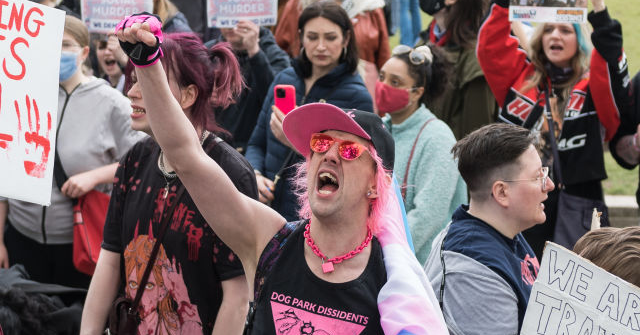Identifying as transgender and queer appears to be “going out of fashion among young people, especially in elite settings,” according to a new report from the Centre for Heterodox Social Science.
The report, authored by Eric Kaufmann, director of the centre and professor of politics at the University of Buckingham, found that transgender and queer identification has dropped sharply among young Americans in Generation Z since 2023. Kaufmann analyzed troves of data from recent surveys about gender and sexuality, including the Foundation for Individual Rights and Expression (FIRE) survey, and surveys from elite institutions like Andover Phillips Academy in Boston and Brown University.
“Whether trans and queer identities will drop to 2010 levels is an open question. But the fact both have declined sharply in just two years is a startling and unanticipated post-progressive development that the education and media establishments will be reluctant to acknowledge,” Kaufmann wrote of his research in an article published to UnHerd on Tuesday.
Analyzing raw data from the most recent FIRE survey, which polled over 60,000 students in 2025, Kaufmann found that just 3.6 percent of respondents identified as a “gender” other than male or female. That figures compared to 5.2 percent in 2024 and 6.8 percent in 2022 and 2023.
“In other words, the share of trans-identified students has effectively halved in just two years,” he wrote.
Kaufmann found that surveys at Andover Phillips Academy and Brown University showed and even more pronounced trend. At Andover, 9.2 percent identified as neither male or female in 2023 but crashed to just 3 percent in 2025. At Brown University, that percentage has dropped from 5 percent in 2022 and 2023 to 2.6 percent in 2025.
When looking at more surveys including sexual orientation, the data reflect rising nonconformity from 2010 until 2023, followed by an almost 10-point swing back in 2024 and 2025, Kaufmann found.
“Interestingly, when the trans and queer trends were at their peak, freshmen were more likely to be non-conforming in their gender and sexuality than seniors,” he noted. “Now that BTQ (bisexual, trans, queer or questioning) identification is in decline, the reverse is true: younger students are less BTQ than older students in their colleges. This is a sign that fashions are changing.”
Kaufmann does not make any affirmative conclusions about the sudden rise and fall of young people identifying as transgender and queer, but points to some correlations in data worth further research.
“What explains the sudden reversal of trans and queer? It’s not because the kids became less woke, more religious or more conservative. Those beliefs remained stable throughout the 2020s,” he said of his report in a thread posted to X.
“Is it improved mental health? Yes, in part. Less anxious and, especially, depressed, students is linked with a smaller share identifying as trans, queer or bisexual,” he assessed.
“But not entirely. Mental illness fell after the pandemic but the sexuality and gender shifts happened at least a year later. All groups, including LGBT, got less mentally ill after the pandemic,” he continued.
“The decline in anxiety and depression occurred within trans, bisexual and queer groups as much as among others. So it wasn’t the case that most of those who solved their emotional problems became heterosexual,” he wrote.
Kaufmann remarked the the rapid decline of trans and queer “seems most similar to the fading of a fashion or trend.”
“It happened largely independently of shifts in political beliefs and social media use, though improved mental health played a role,” he wrote.
Read more HERE.
Katherine Hamilton is a political reporter for Breitbart News. You can follow her on X @thekat_hamilton.
Read the full article here


